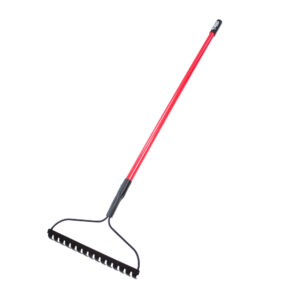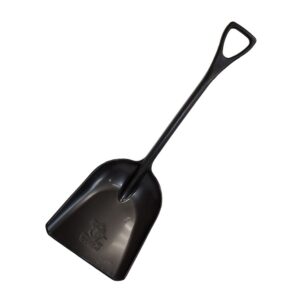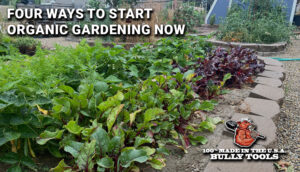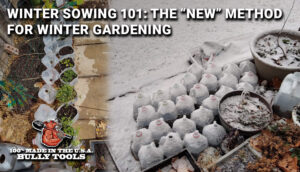How To Compost Your Fall Décor
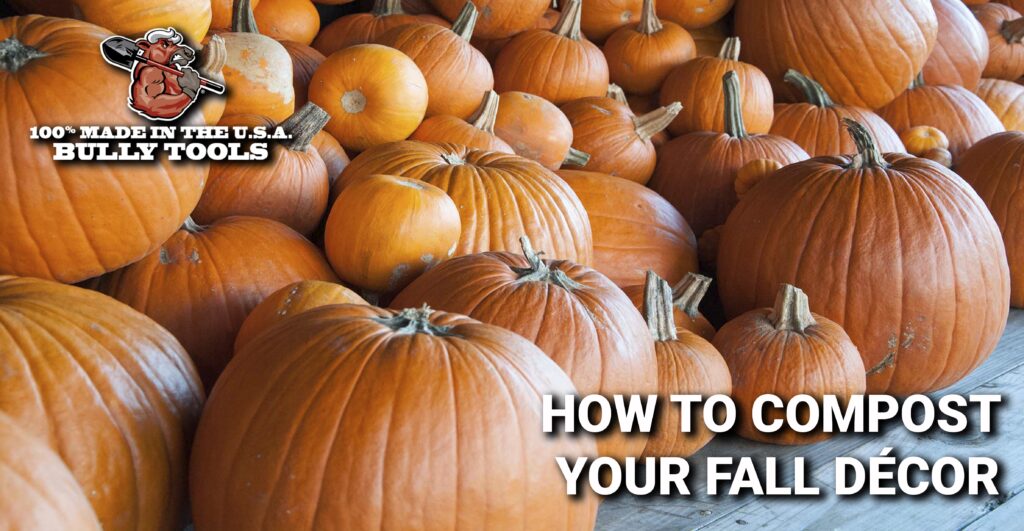
Jack-o-lanterns, despite their sometimes-ghoulish faces, can make your garden plot next year very happy. Organic decorations like pumpkins and gourds are beautiful décor for the fall, and they make even better fertilizer for next spring. Before you throw those healthy or slightly rotted pumpkins in the garbage or with your lawn clippings for weekly trash collection, consider putting them to use in other ways, like in your compost pile.
WHAT IS COMPOST?
If you’ve never composted in the past, composting your natural fall decorations is the perfect start. Compost is organic material commonly found in everyday waste like food scraps and lawn trimmings that if composted and placed around a plant properly, encourages the growth of beneficial bacteria and fungi and enriches soil which will aid in your plants’ growth. Compost is a natural alternative to costly fertilizers and additives that can actually do more harm than good to your lawn or garden if used improperly – or if your land doesn’t react well to the chemicals.
The EPA outlines three basic composting ingredients: browns like dead leaves, branches, and twigs; greens like grass clippings, vegetable and fruit scraps, and coffee grounds; and water. So, not only is composting beneficial to the environment because of the way it organically enriches the soil, but it’s also a way to get rid of waste without it ending up in a landfill. Pumpkins fall into the ‘greens’ category and when left to rot, they will turn into compost in six to nine months.
According to the Agricultural Marketing Resource Center, in 2020, over 1.5 billion pounds of pumpkins were harvested in the United States – that’s nearly 66,200 acres of pumpkins! These are useable pumpkins – those rich in color, shaped appropriately, and without disease or defect. Overall, over 2 billion pounds were harvested – which begs the question: what happened to the other half a billion? Chances are these pumpkin farms composted them and used those nutritional benefits to improve their crop harvest this year.
PUMPKIN VARIETIES
Pumpkins are widely available and incredibly popular indoor and outdoor décor in October and November. When autumn finally rolls around, individuals and families can’t wait to go out and pick their own gourds. They don’t just use them to carve or as décor either; many people cook with fresh pumpkins. There are tons of recipes for pumpkin-flavored goodies, and they don’t just include desserts. You can make pumpkin bread, pumpkin soup, pumpkin pasta, or for those with a sweet tooth – the possibilities extend far beyond the classic pumpkin pie.
The question remains though, what pumpkins are the best for carving, cooking, or just to look pretty? Let’s break down some of the most popular varieties of pumpkins and gourds that you can find at a local farm, at the grocery store, or nursery.
There are over 100 varieties of pumpkins and gourds – here are some of the best known

AUTUMN GOLD
Perfect for carving or scraping to make pies. Easy to grow in your own backyard and a very popular pumpkin found in pumpkin patches. Round shape and sturdy stem. Glossy, deep golden-orange in color. Medium-sized pumpkins weigh between 7 and 10 lbs.
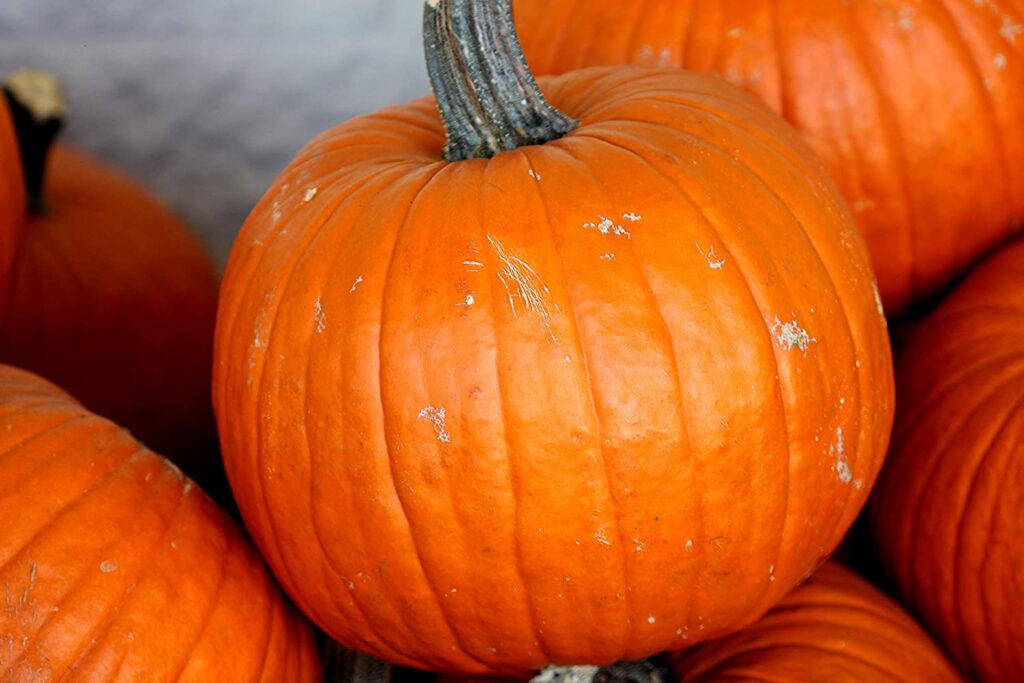
CONNECTICUT FIELD
First grown by Indigenous people in the New England region and one of the oldest species of pumpkins in existence. Can grow round or oval in shape depending on when harvested. Perfect for carving or cooking. Traditional American pumpkin. Medium pumpkins can weigh up to 20 lbs. Beautiful bright orange color.
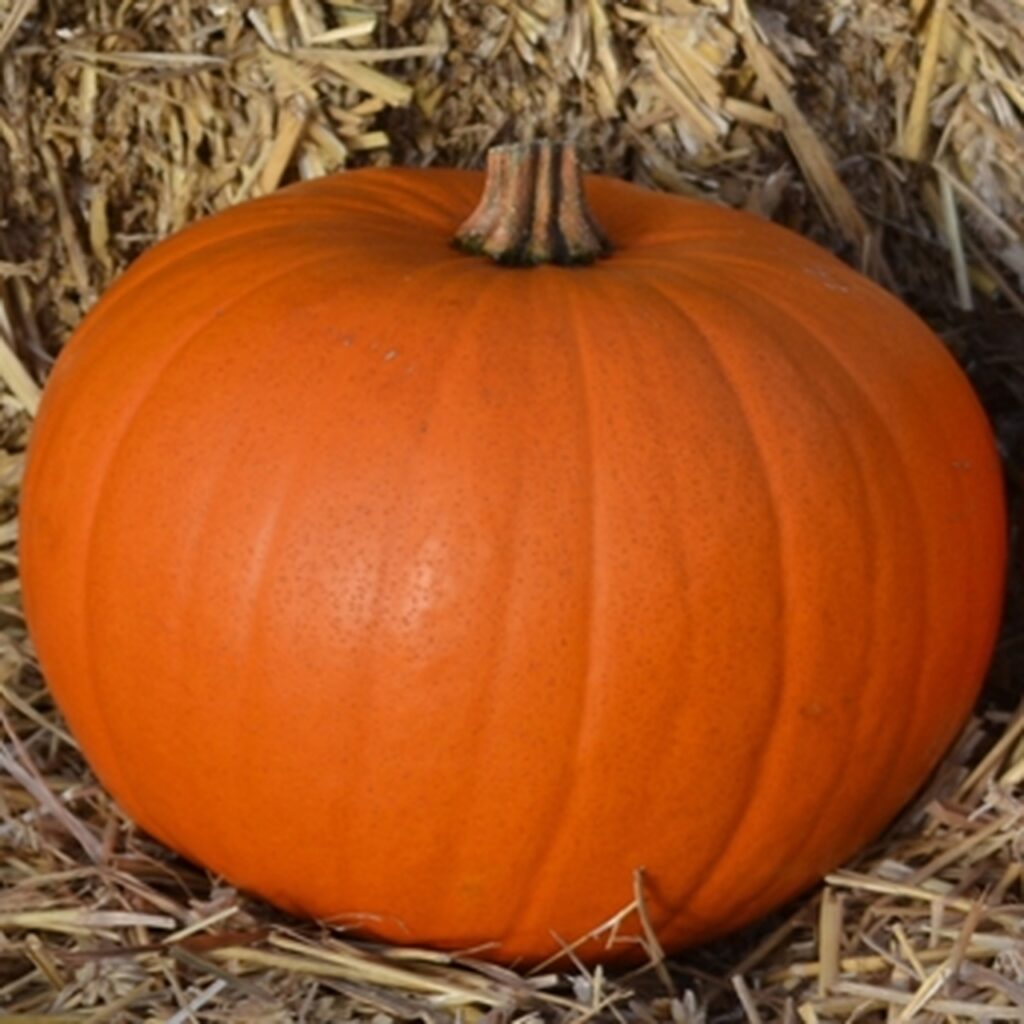
HARVEST MOON
More compact than other pumpkin species. Medium pumpkins can grow to be between 8 and 12 lbs. Grow round and with classic ribbed indentations up the sides. Perfect for carving or cooking.
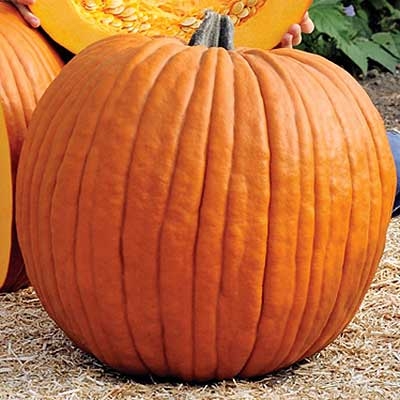
HOWDEN
A traditional Halloween favorite. Can weigh between 20 and 30 lbs. Have a beautiful, intense orange color. Round shape and strong stem. Perfect for carving.

LUMINA WHITE
Round in shape with a pale white color. Weigh roughly 10 to 12 lbs. Perfect for carving, decoration, or arts and crafts. White color makes it very eye-catching and different than other pumpkins in the patch or adorning porches and front stoops.
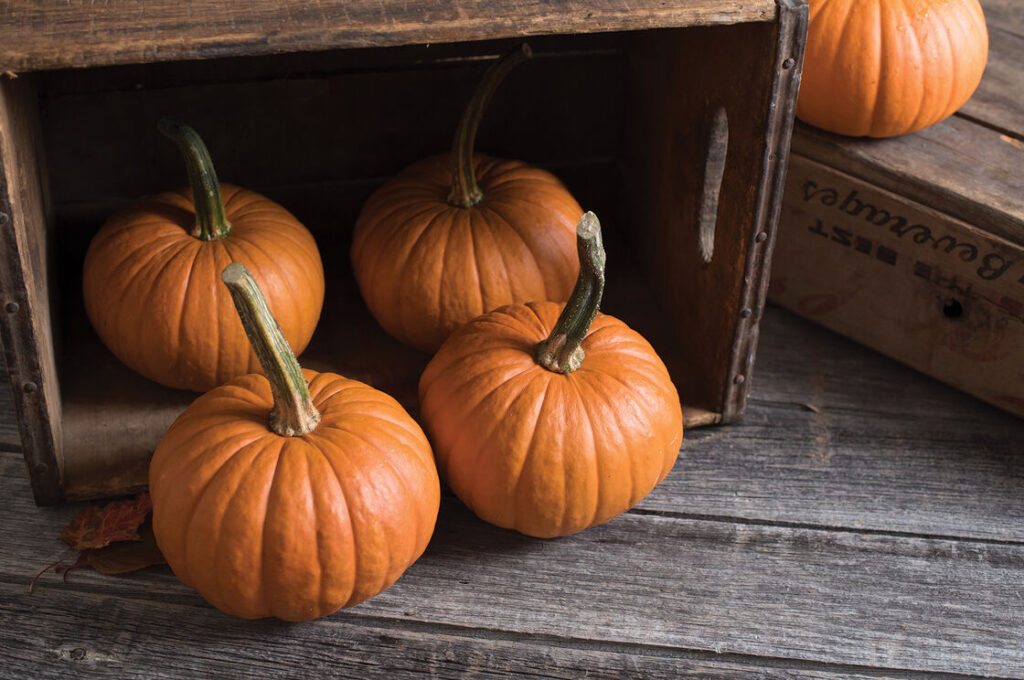
BABY BEAR
Small, mini pumpkin weighs between 1 ½ and 2 lbs. Mature pumpkins are slightly shorter than other varieties. Stout and oval in shape. Tend to have long, sturdy handles. Deep orange in color with classic ribbing around the sides. Perfect for decoration and cooking.

BLUE DOLL
A funky choice of pumpkin. Blue-green rind and orange flesh. Medium-sized pumpkins weigh between 15 and 20 lbs. Oblong shape, sometimes square in appearance. Deep ribbing around the outsides. Sweet flesh is perfect for cooking pies and soups and canning. Exotic coloring makes them perfect for decoration.
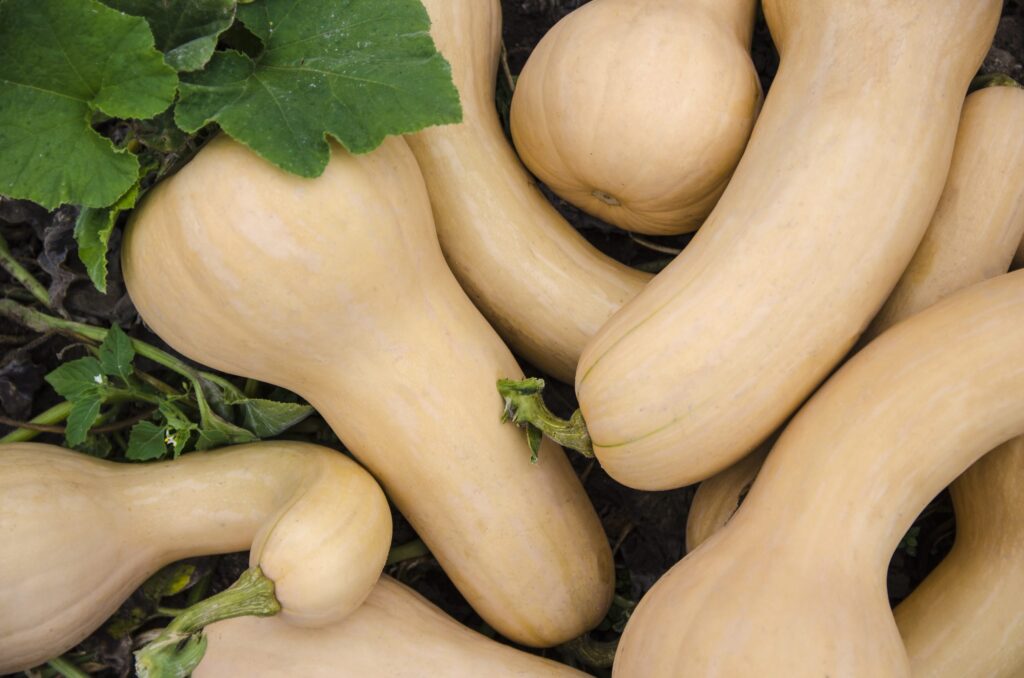
BUTTERNUT SQUASH
Also known as a butternut pumpkin in some areas of the world. A type of pumpkin and winter squash. Has tan-yellow skin and orange flesh. Sweet, nutty flavor, similar in taste to a pumpkin. Grow oblong and are very popular in soups. Can weigh between 2 and 3 lbs.

CARNIVAL
Small, decorative pumpkin. Deep ridges and acorn-shaped. Many are multi-colored with hues of orange, yellow, and green. When grown in warmer conditions, green colors appear more than yellow and orange. Natural speckled design makes them perfect for table décor. Weigh about 1 ½ lbs.
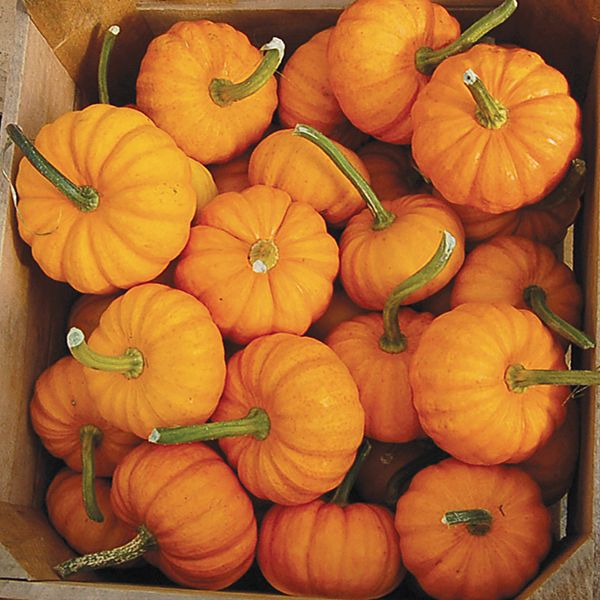
JACK BE LITTLE
Miniature pumpkin can fit in the palm of your hand. Bright orange in color with thin stems. Flat but adorable. Perfect for table decorations or cooking. Weigh just 8 ounces. A favorite among kids.
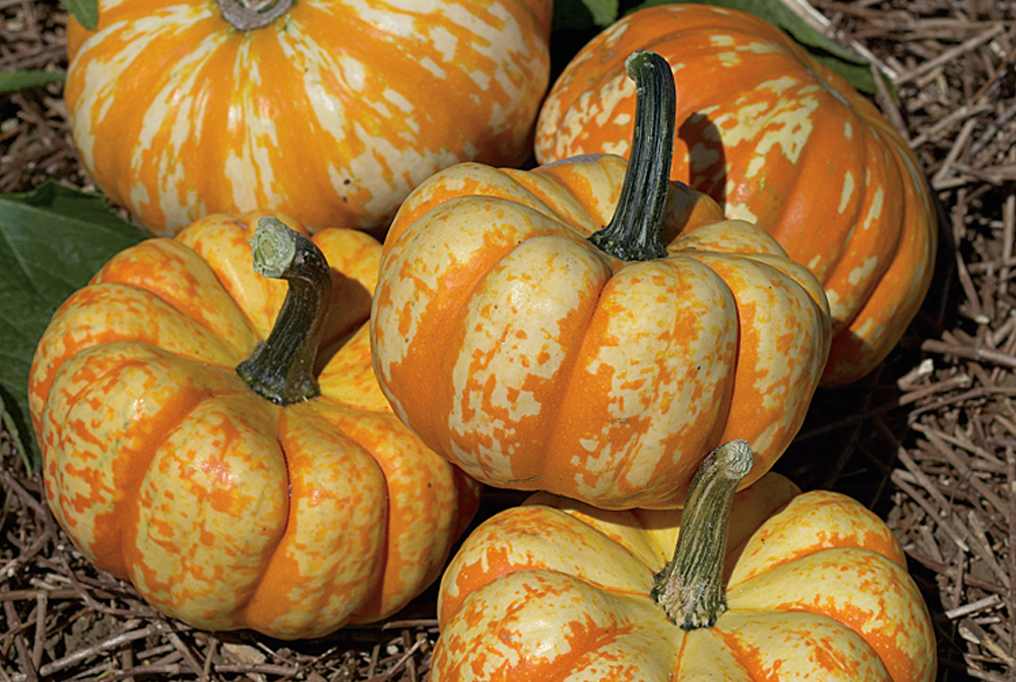
HOOLIGAN
Similar in size and weight of Jack Be Littles but are orange and pale yellow in color. Interesting pattern where ribs are orange and fuller portions are yellow with flecks of orange. Perfect for décor and ornamental purposes.

SMALL SUGAR PUMPKIN
Best pumpkin for making pies and desserts. Little cousin of Connecticut Field pumpkin. Bright orange-yellow skin and round in shape. Light green, sturdy stems. Weigh about 7 lbs. Date back to early colonial period of the United States.
HOW TO COMPOST YOUR PUMPKINS
Like we said, if you haven’t composted in the past and you have 4 or 5 pumpkins decorating your yard, there is no better time to start than now! There’s no reason that rich, organic material like this should go to waste in a landfill (as a matter of fact, we should all try to reduce the amount of trash we send to landfills on a daily basis!). Every year more than 1.3 billion pounds of precious food waste takes up space in landfills when they could go to better use like benefiting soil or being turned into biofuel.
Pumpkins, like all other edibles, will begin to rot and turn soggy as they age off of their vine, but as these legumes break down, their nutrients can be released back into the earth. Composting pumpkins is remarkably simple, and your town may have a collection program in place to do just that. It’s the same principle as Christmas tree recycling! If you and your family celebrate by cutting down your own tree, you know the hassle that comes with getting rid of it. Townships will collect these trees, separate them from their normal trash collection, and turn the once beautiful trees into mulch that they then use to beautify areas around the community. Hopefully, one day very soon pumpkin recycling will become as commonplace as Christmas tree recycling, but until then, you can do it yourself, at home, very simply.
To start, you’ll want to make sure that your pumpkin is free of any non-organic substance. Remove candles, candlewax, stickers, plastic decorations, or anything of the like – these won’t compost. If you painted, put glitter on, or covered your pumpkin in a sealant, sadly these can’t be composted either, but you can cut off parts and just compost the pure pumpkin portions. You’ll also want to make sure that there are no pumpkin seeds inside. If left in, these seeds can germinate and grow on their own.
Now that your pumpkin is clean and free of seeds and additives, the next step is to smash it. By smashing the pumpkin, you’re accelerating the breakdown and decomposition of the gourd before the process even begins. You can cut it into chunks, hit it with a hammer, or drop it from a high surface – this is also a fun way to get your kids involved but be sure to supervise.
If you don’t already have a compost bin or pile started, dig a hole in an area where you garden or in an unused portion of your yard where the sun hits it. By the end of October, your garden plot is probably already cleared out (if you need any help accomplishing that read our latest blog post on how to clear out your summer garden and prep it for winter), and if you intend on using the same area next year, you can get those nutrients mixed into the ground a few seasons early. Cover the hole in soil, or if you don’t want to dig a hole, place the pumpkin on top of the soil and cover it with leaves. If you put it in your compost pile, be sure to add extra leaves and water to balance out the greens to browns ratio.
And that’s it! Over the winter, the pumpkin or pumpkins will break down, and next spring, your garden will have rich soil that you can use to have a healthy, bountiful harvest. Plus, you’ve kept your pumpkin out of a landfill, so by composting you’ll be helping yourself, your garden, and the environment!
While you’re at it, throw any old corn stalks, hay barrels, or gourds into the mix as well. Trust us, you won’t be sorry, and your garden will thank you.
FINAL THOUGHTS
If you plan to throw away your pumpkins once the seasonal excitement turns from Halloween to Thanksgiving and Christmas, think again! There are a lot of ways to reuse these natural decorations or put parts of them to additional use. For example, many people toast pumpkin seeds instead of throwing them away or instead of throwing away their jack-o-lanterns at the beginning of November, they rotate them to reveal the uncarved side.
Autumn ends December 21st, or whenever you decide to start decorating for the winter holidays, haha, so there’s still plenty of time to show off your pumpkins. Once you’re done with them, put them to even better use by composting them. Below are some tools that will help you control and maintain your compost pile and garden area during the waning days of fall, but you can shop our entire selection of lawn and garden, snow and ice, and specialty tools here.


